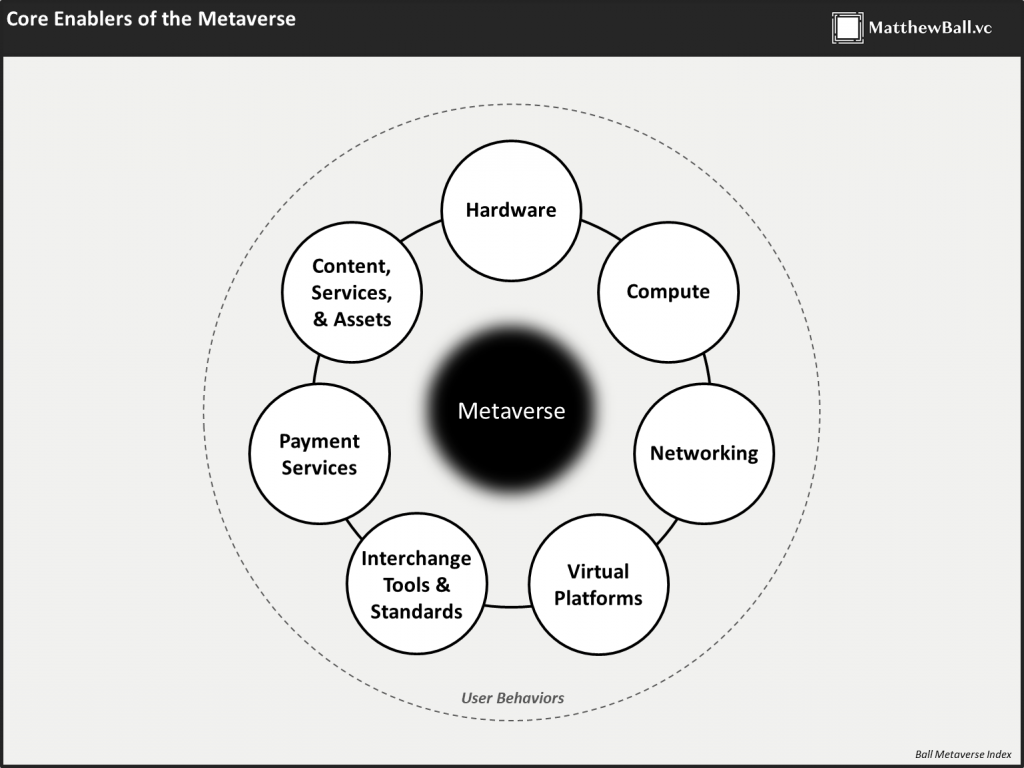A venture capitalist pondering metaverses
*Rather a lot going on here.
https://www.matthewball.vc/the-metaverse-primer
(…)
Personally, I’m tracking the emergence of the Metaverse around eight core categories, which can be thought of as a stack (click each header for a dedicated essay). (((That’s a lot of dedicated essays.)))
Hardware: The sale and support of physical technologies and devices used to access, interact with, or develop the Metaverse. This includes, but is not limited to, consumer-facing hardware (such as VR headsets, mobile phones, and haptic gloves) as well as enterprise hardware (such as those used to operate or create virtual or AR-based environments, e.g. industrial cameras, projection and tracking systems, and scanning sensors). This category does not include compute-specific hardware, such as GPU chips and servers, as well as networking-specific hardware, such as fiber optic cabling or wireless chipsets.
Networking: The provisioning of persistent, real-time connections, high bandwidth, and decentralized data transmission by backbone providers, the networks, exchange centers, and services that route amongst them, as well as those managing ‘last mile’ data to consumers.
Compute: The enablement and supply of computing power to support the Metaverse, supporting such diverse and demanding functions as physics calculation, rendering, data reconciliation and synchronization, artificial intelligence, projection, motion capture and translation.
Virtual Platforms: The development and operation of immersive digital and often three-dimensional simulations, environments, and worlds wherein users and businesses can explore, create, socialize, and participate in a wide variety of experiences (e.g. race a car, paint a painting, attend a class, listen to music), and engage in economic activity. These businesses are differentiated from traditional online experiences and multiplayer video games by the existence of a large ecosystem of developers and content creators which generate the majority of content on and/or collect the majority of revenues built on top of the underlying platform.
Interchange Tools and Standards: The tools, protocols, formats, services, and engines which serve as actual or de facto standards for interoperability, and enable the creation, operation and ongoing improvements to the Metaverse. These standards support activities such as rendering, physics, and AI, as well as asset formats and their import/export from experience to experience, forward compatibility management and updating, tooling, and authoring activities, and information management.
Payments: The support of digital payment processes, platforms, and operations, which includes fiat on-ramps (a form of digital currency exchange) to pure-play digital currencies and financial services, including cryptocurrencies, such as bitcoin and ether, and other blockchain technologies.
Metaverse Content, Services, and Assets… (((etc etc, he’s been at it for years)))
